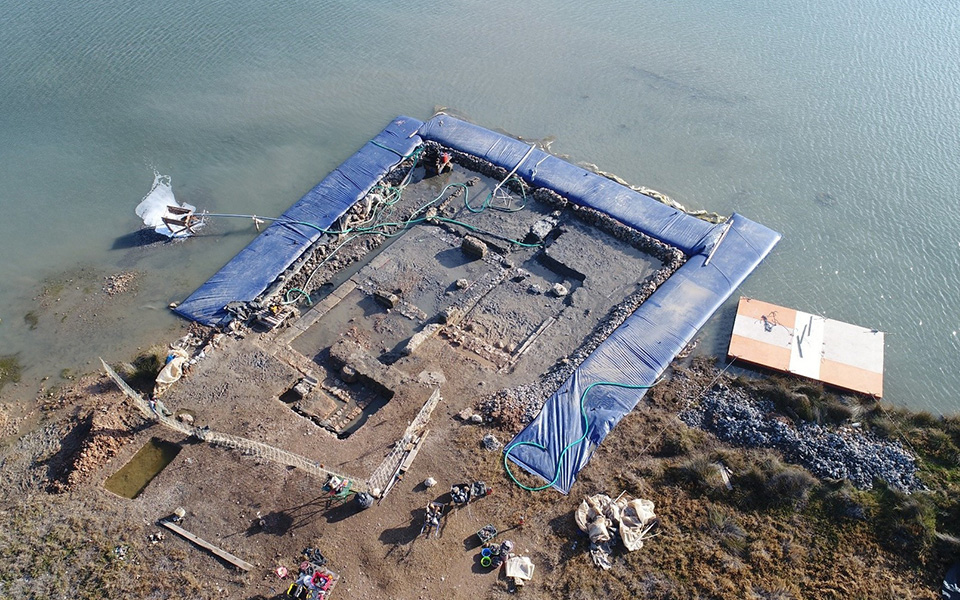A stone’s throw from Athens, the Greek island of Salamis, immortalized as the site of the epoch-making naval battle against the Persians in 480 BC, is now revealing long-held secrets hidden beneath its coastal waters. Recent foreshore and underwater archaeological research, carried out by members of the Greece’s Ephorate of Underwater Antiquities, have brought to light the remains of an ancient city that was once the thriving capital of the largest island in the Saronic Gulf.
Among the many findings are sections of an ancient sea wall that would have protected the entranceway to the city’s port, and a partially submerged stoa—a large public building that once formed part of the bustling agora, or marketplace. Intriguingly, some of the portable finds found in the floor levels of the stoa hint at the island’s close connection to the mythical figure of Ajax, one of the mightiest heroes of the Trojan War.
These discoveries, which form part of a joint investigation by the Hellenic Ministry of Culture and the Institute of Underwater Archaeological Research (I.EN.A.E), is a testament to the enduring allure and significance of coastal archaeology in Greece, a country that boasts a long and rich tradition of maritime culture.
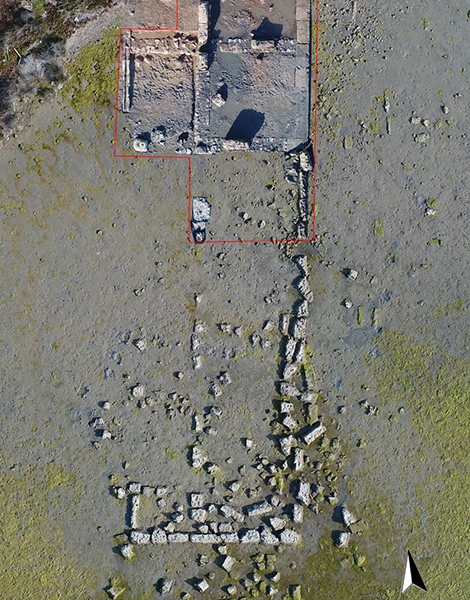
© E. Kroustalis / Hellenic Ministry of Culture
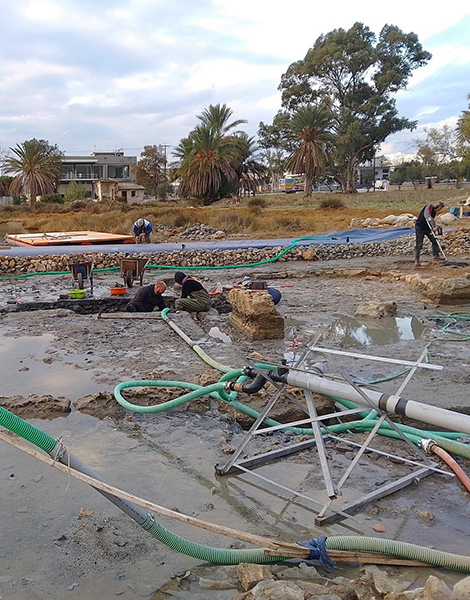
© E. Kroustalis / Hellenic Ministry of Culture
Rediscovering Salamis
Following seven consecutive years of investigations along the coastal waters of eastern Salamis, archaeologists made a remarkable discovery in the northwest side of the Bay of Ampelaki in the summer of 2022—a long, oblong building, measuring approximately 32 meters in length and 6 meters in width.
Oriented in a general north-south direction, the building has been submerged for centuries, hidden beneath thick layers of sediment. The investigators, led by Dr Angeliki Simosi and Professor Emeritus Yannis Lolos, believe that more remains of the building continue to the north, buried under the modern shoreline.
What is known so far is that the structure bears all the hallmarks of a classical stoa, featuring solid stone walls, 60cm thick, the remnants of six or seven rooms open to the west (i.e., the façade), each measuring about 4.7 by 4.7 meters, a porch, and a long walkway supported by columns. The rooms were likely used for various functions, perhaps as shopfronts or spaces for public administration in the ancient agora.
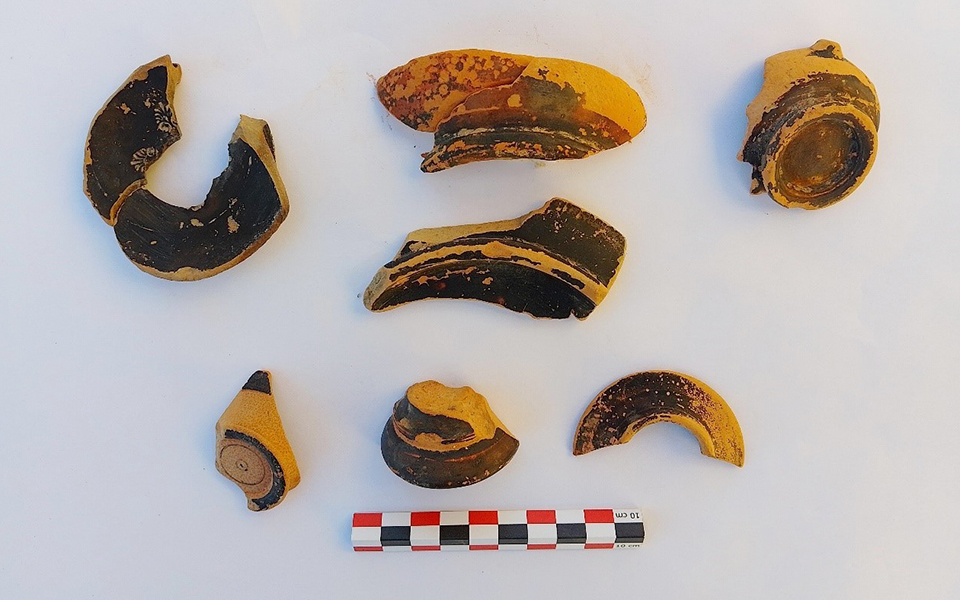
© Ch. Marabea / Hellenic Ministry of Culture
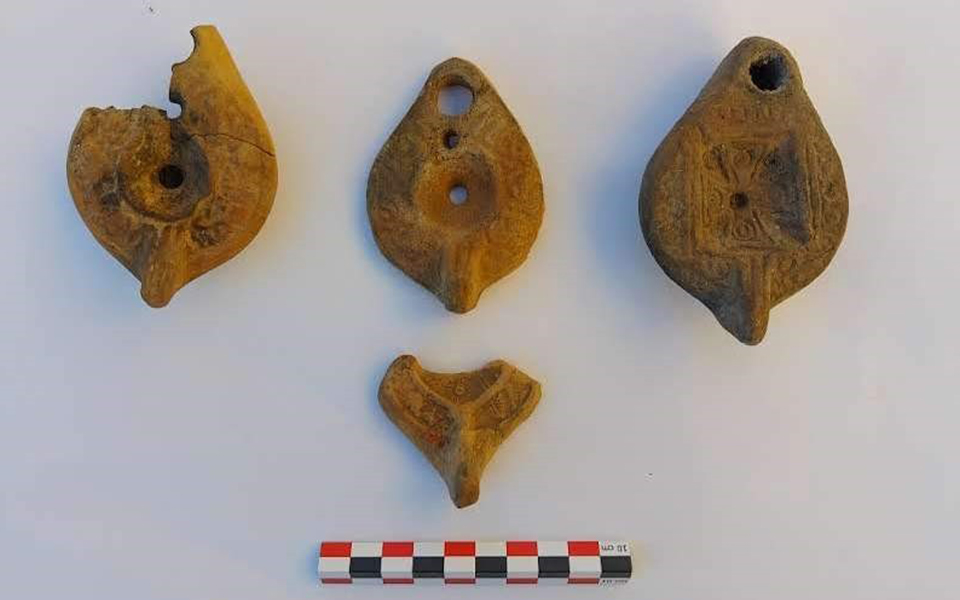
© Ch. Marabea / Hellenic Ministry of Culture
Using an ingenious method of a cofferdam, a specially designed enclosure from which the water is drained from the site, the team has also uncovered a wealth of portable artifacts hidden within the layers of sediment in and around the stoa, including a significant collection of pottery, ranging from the Classical period to the Late Roman/Early Byzantine era (up to the 6th century AD). Notable among these precious finds are fragments of 4th century BC Athenian black-painted vessels, dozens of clay amphora stoppers (a nod to the building’s commercial function), oil lamps, as well as 30 bronze coins from Athens and other regions, mostly dating to the late 4th and early 3rd centuries BC.
Three marble fragments are of particular interest. The first is a fragment of a column with part of an inscription, in two or three fragmentary verses. The second depicts a muscular arm crowning a bearded man, a motif that may represent the mythical hero Ajax the Great (known in Greek as “Aias”), who was associated with Salamis in Homer’s “Iliad,” an epic poem about the Trojan War. The third is a fragment of a statuette depicting an upright male figure, 15.5cm high, wearing a “himation,” a type of mantle or wrap. Researchers believe it is a statuette of Asclepius, the god of medicine, and dated to the late 4th century BC.
Epigraphical sources indicate that both the mythical hero Ajax and the divine Asclepius were the subjects of cult worship on the island throughout antiquity.
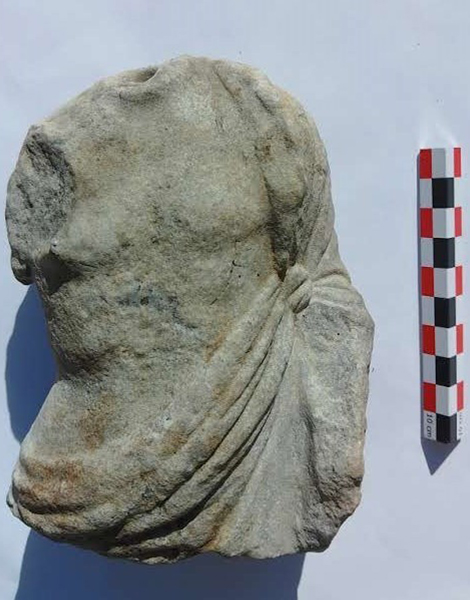
© Ch. Marabea / Hellenic Ministry of Culture
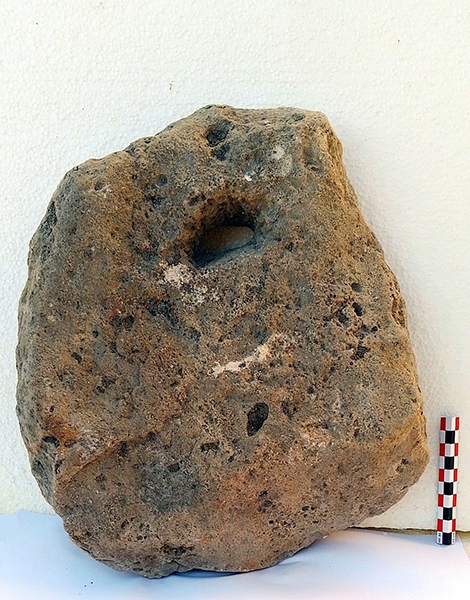
© Ch. Marabea / Hellenic Ministry of Culture
History and Mythology
The discovery of the stoa offers crucial insights into the urban layout and economic life of ancient Salamis. Positioned at the eastern boundary of the agora and near the city’s port – as evidenced by the proximity of the sea wall – the stoa would have served as an important hub for commercial activities, public administration, and social gatherings. The range of pottery and other artifacts suggests the site was in continuous use for many centuries, highlighting the enduring importance of Salamis well into the Late Roman/Early Byzantine period.
Emphasizing the maritime character of the site, a small stone anchor (36 x 29cm, 8.5cm thick), with a hole for the mooring rope, was found outside the boundary of the building. This, along with another anchor found during earlier excavations in the Bay of Ampelaki, currently on display in the Archaeological Museum of Salamis, underscores the island’s role as a vital maritime hub in the Saronic Gulf and the wider Aegean.
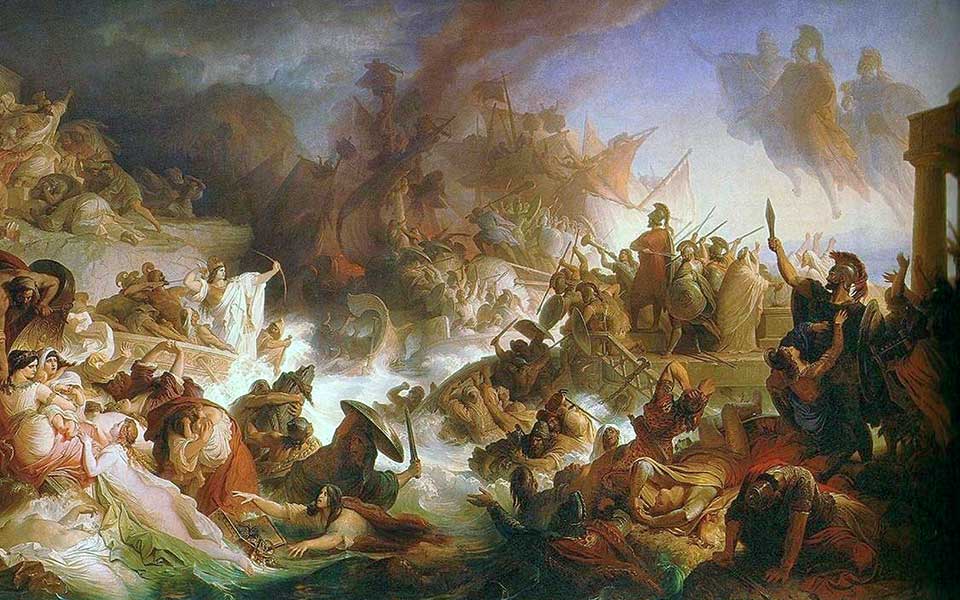
© Public domain
Scholars have long known that Salamis holds an especially important place in both early Greek history and mythology. Colonized by nearby Aegina – a major sea power in the 7th to 5th centuries BC – the strategically located island was seized by Athens around 600 BC, during the time of the great statesman and lawgiver Solon (c. 630-560 BC).
Its greatest hour, however, was arguably one of the defining moments in the history of Western civilization. The narrow straits between Salamis and the mainland became the stage for the epic 480 BC naval battle where a combined Greek fleet, under the leadership of Athenian general Themistocles (c. 524-459 BC), secured a stunning victory against a far more numerous invading force of Persians. Victory in the Battle of Salamis effectively saved nascent Athenian democracy from being extinguished.
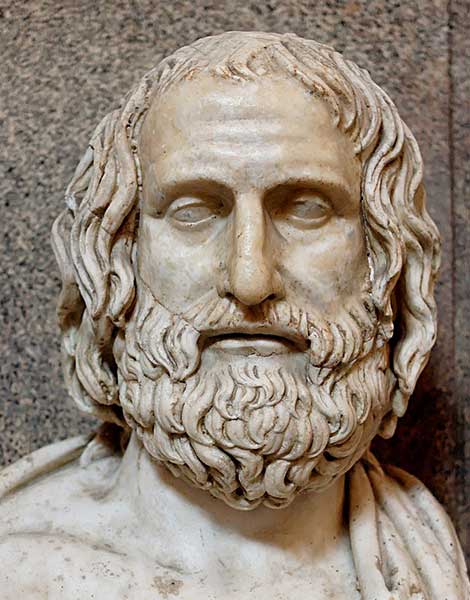
© Public domain
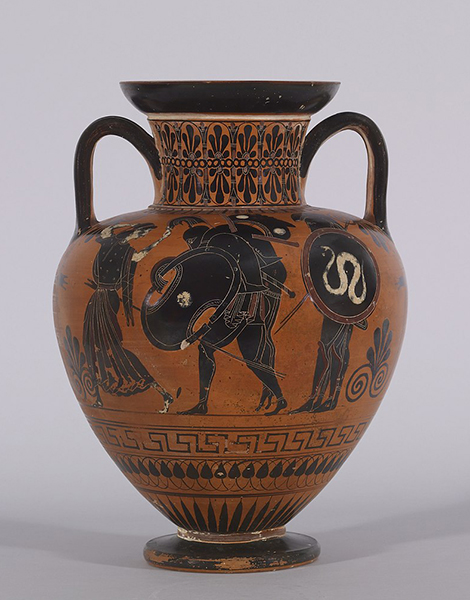
© Antimenes Painter / Public domain
The island is also traditionally considered the birthplace of the great tragedian Euripides (480-406 BC), who is said to have been born on the day of the famous battle, and whose most influential works include “Medea,” “Electra,” and “The Trojan Women.”
According to Homer’s “Iliad,” in Book II’s famous “Catalogue of Ships,” Salamis took part in the Trojan War with twelve ships under the leadership of Ajax the Great. The son of king Telamon of Salamis, one of Jason’s Argonauts, Ajax was revered as one of the mightiest warriors in the Greek army, second only to the divine hero Achilles. Renowned for his strength and courage, Ajax’s tragic demise is the subject of a late 4th century play by Sophocles.
The marble relief depicting Ajax found within the stoa serves as a potent reminder of the deep intertwining of history and mythology in early Greek culture—a tangible link to a society that revered its heroes and immortalized their deeds in poetry and stone.
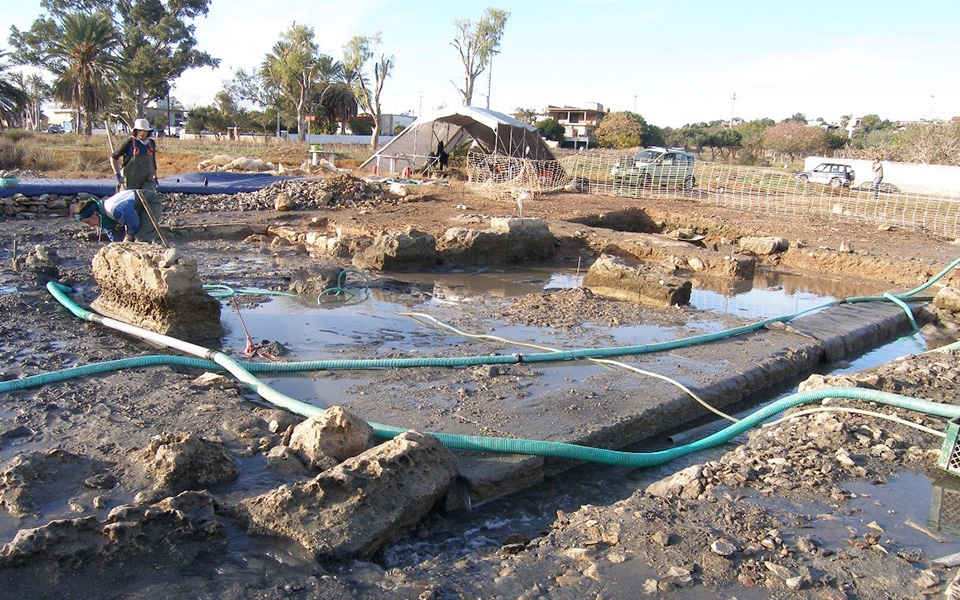
© Y. Lolos / Hellenic Ministry of Culture
Foreshore and Underwater Archaeology
The discovery of the stoa, the sea walls, and the remains of other public buildings at Salamis is part of a broader trend in foreshore and underwater archaeology in Greece, a field that has gained momentum in recent years in terms of more advanced methodologies and means of technical analysis. The unique geographical features of the Greek coastline, its near constant seismic activity, combined with the country’s rich maritime history, make it an ideal location for such research, and the coastal waters around Salamis are no exception.
Years of interdisciplinary archaeological research in Greece has revealed not just submerged buildings, shipwrecks, and myriad stand-alone artifacts, but also entire landscapes that were once above water, helping to piece together a complex tapestry of an ancient culture that was deeply connected to the sea. One of the best examples of this is the extraordinary research at Pavlopetri, in the southern Peloponnese. From sunken cities to lost harbors, underwater excavations are shedding light on how the early Greeks interacted with their maritime environment, how they defended their cities, and how they conducted trade across the Mediterranean.
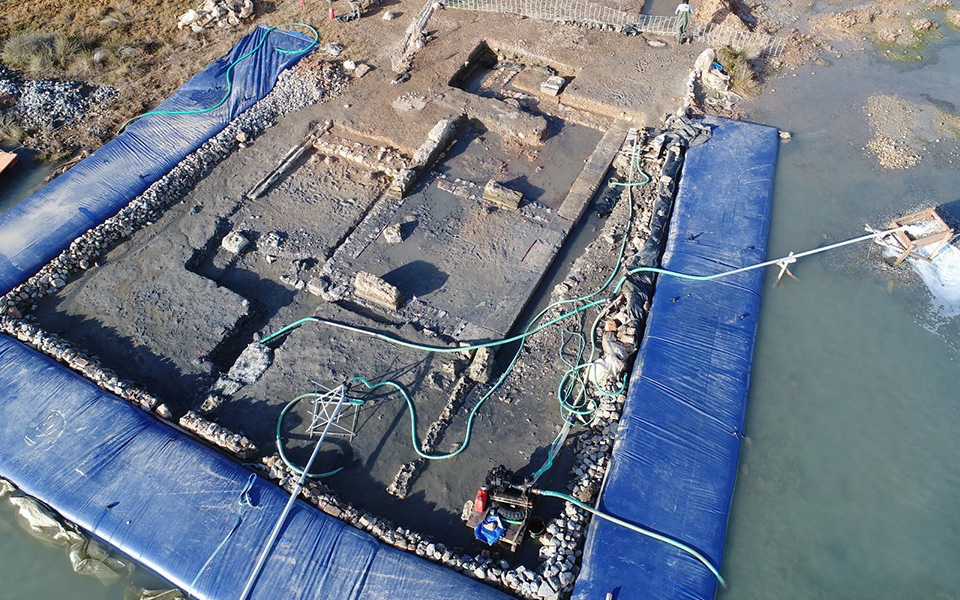
© E. Kroustalis / Hellenic Ministry of Culture
The findings at Salamis are significant because they offer a rare glimpse into the life of an important yet poorly understood ancient city that has been largely lost to the sea. In particular, the discovery of the stoa corroborates a passage in Pausanias’ “Description of Greece,” composed in the middle of the second century AD. In it, the Greek traveler describes seeing “agora ruins” near the port.
These discoveries not only enrich our understanding of the past but also highlight the importance of preserving underwater cultural treasures for future generations. As archaeologists continue to explore the submerged remains of Salamis, they are not just uncovering stones and pottery—they are bringing to light the stories of an ancient civilization that continues to inspire the world. Whether through the ruins of a stoa or the myth of a hero, the past speaks to us, inviting us to explore, to learn, and to remember.

